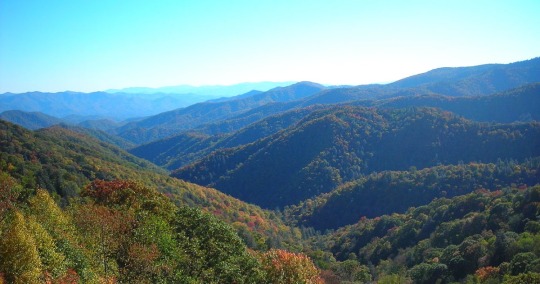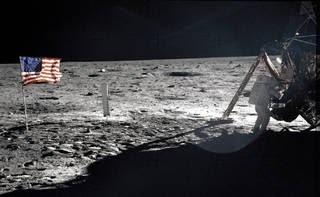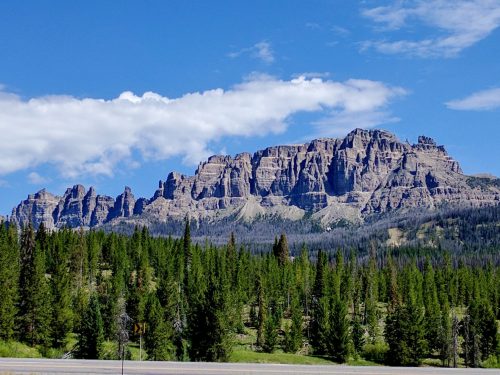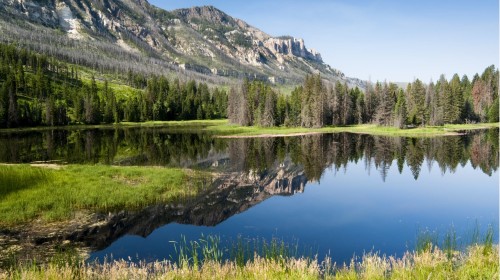Mattginnow - National Parks
More Posts from Mattginnow and Others
Matthew Ginnow, Matt Ginnow
Amazing Earth: Satellite Images from 2020
In the vastness of the universe, the life-bringing beauty of our home planet shines bright. During this tumultuous year, our satellites captured some pockets of peace, while documenting data and striking visuals of unprecedented natural disasters. As 2020 comes to a close, we’re diving into some of the devastation, wonders, and anomalies this year had to offer.
NASA’s fleet of Earth-observing satellites and instruments on the International Space Station unravel the complexities of the blue marble from a cosmic vantage point. These robotic scientists orbit our globe constantly, monitoring and notating changes, providing crucial information to researchers here on the ground.
Take a glance at 2020 through the lens of NASA satellites:
A Delta Oasis in Southeastern Kazakhstan

Seen from space, the icy Ili River Delta contrasts sharply with the beige expansive deserts of southeastern Kazakhstan.
When the Operational Land Imager (OLI) on Landsat 8 acquired this natural-color image on March 7, 2020, the delta was just starting to shake off the chill of winter. While many of the delta’s lakes and ponds were still frozen, the ice on Lake Balkhash was breaking up, revealing swirls of sediment and the shallow, sandy bed of the western part of the lake.
The expansive delta and estuary is an oasis for life year round. Hundreds of plant and animal species call it home, including dozens that are threatened or endangered.
Fires and Smoke Engulf Southeastern Australia

A record-setting and deadly fire season marred the beginning of the year in Australia. Residents of the southeastern part of the country told news media about daytime seeming to turn to night, as thick smoke filled the skies and intense fires drove people from their homes.
This natural-color image of Southeastern Australia was acquired on January 4, 2020, by the Moderate Resolution Imaging Spectroradiometer (MODIS) on NASA’s Aqua satellite. The smoke has a tan color, while clouds are bright white. It is likely that some of the white patches above the smoke are pyrocumulonimbus clouds—clouds created by the convection and heat rising from a fire.
Nighttime Images Capture Change in China

A team of scientists from NASA’s Goddard Space Flight Center (GSFC) and Universities Space Research Association (USRA) detected signs of the shutdown of business and transportation around Hubei province in central China. As reported by the U.S. State Department, Chinese authorities suspended air, road, and rail travel in the area and placed restrictions on other activities in late January 2020 in response to the COVID-19 outbreak in the region.
A research team analyzed images of Earth at night to decipher patterns of energy use, transportation, migration, and other economic and social activities. Data for the images were acquired with the Visible Infrared Imaging Radiometer Suite (VIIRS) on the NOAA–NASA Suomi NPP satellite (launched in 2011) and processed by GSFC and USRA scientists. VIIRS has a low-light sensor—the day/night band—that measures light emissions and reflections. This capability has made it possible to distinguish the intensity, types, and sources of lights and to observe how they change.
The Parched Paraná River

Though a seemingly serene oasis from above, there is more to this scene than meets the eye. On July 3, 2020, the Operational Land Imager (OLI) on Landsat 8 captured this false-color image of the river near Rosario, a key port city in Argentina. The combination of shortwave infrared and visible light makes it easier to distinguish between land and water. A prolonged period of unusually warm weather and drought in southern Brazil, Paraguay, and northern Argentina dropped the Paraná River to its lowest water levels in decades. The parched river basin has hampered shipping and contributed to an increase in fire activity in the delta and floodplain.
The drought has affected the region since early 2020, and low water levels have grounded several ships, and many vessels have had to reduce their cargo in order to navigate the river. With Rosario serving as the distribution hub for much of Argentina’s soy and other farm exports, low water levels have caused hundreds of millions of dollars in losses for the grain sector, according to news reports.
Historic Fires Devastate the U.S. Pacific Coast

Climate and fire scientists have long anticipated that fires in the U.S. West would grow larger, more intense, and more dangerous. But even the most experienced among them have been at a loss for words in describing the scope and intensity of the fires burning in West Coast states during September 2020.
Lightning initially triggered many of the fires, but it was unusual and extreme meteorological conditions that turned some of them into the worst conflagrations in the region in decades.
Throughout the outbreak, sensors like the Visible Infrared Imaging Radiometer Suite (VIIRS) and the Ozone Mapping and Profiler Suite (OMPS) on the NOAA-NASA Suomi NPP satellite collected daily images showing expansive, thick plumes of aerosol particles blowing throughout the U.S. West on a scale that satellites and scientists rarely see.
This image shows North America on September 9th, 2020, as a frontal boundary moved into the Great Basin and produced very high downslope winds along the mountains of Washington, Oregon, and California. The winds whipped up the fires, while a pyrocumulus cloud from the Bear fire in California injected smoke high into the atmosphere. The sum of these events was an extremely thick blanket of smoke along the West Coast.
The Sandy Great Bahama Bank

Though the bright blues of island waters are appreciated by many from a sea-level view, their true beauty is revealed when photographed from space. The underwater masterpiece photographed above is composed of sand dunes off the coast of the Bahamas.
The Great Bahama Bank was dry land during past ice ages, but it slowly submerged as sea levels rose. Today, the bank is covered by water, though it can be as shallow as two meters (seven feet) deep in places. The wave-shaped ripples in the image are sand on the seafloor. The curves follow the slopes of the dunes, which were likely shaped by a fairly strong current near the sea bottom. Sand and seagrass are present in different quantities and depths, giving the image it’s striking range of blues and greens.
This image was captured on February 15th, 2020, by Landsat 8, whose predecessor, Landsat 7, was the first land-use satellite to take images over coastal waters and the open ocean. Today, many satellites and research programs map and monitor coral reef systems, and marine scientists have a consistent way to observe where the reefs are and how they are faring.
Painting Pennsylvania Hills

Along with the plentiful harvest of crops in North America, one of the gifts of Autumn is the gorgeous palette of colors created by the chemical transition and fall of leaves from deciduous trees.
The folded mountains of central Pennsylvania were past peak leaf-peeping season but still colorful when the Operational Land Imager (OLI) on the Landsat 8 satellite passed over on November 9, 2020. The natural-color image above shows the hilly region around State College, Pennsylvania overlaid on a digital elevation model to highlight the topography of the area.
The region of rolling hills and valleys is part of a geologic formation known as the Valley and Ridge Province that stretches from New York to Alabama. These prominent folds of rock were mostly raised up during several plate tectonic collisions and mountain-building episodes in the Ordovician Period and later in the creation of Pangea—when what is now North America was connected with Africa in a supercontinent. Those events created the long chain of the Appalachians, one of the oldest mountain ranges in the world.
A Dangerous Storm in the Night

Ominous and looming, a powerful storm hovered off the US coastline illuminated against the dark night hues.
The Visible Infrared Imaging Radiometer Suite (VIIRS) on NOAA-20 acquired this image of Hurricane Laura at 2:20 a.m. Central Daylight Time on August 26, 2020. Clouds are shown in infrared using brightness temperature data, which is useful for distinguishing cooler cloud structures from the warmer surface below. That data is overlaid on composite imagery of city lights from NASA’s Black Marble dataset.
Hurricane Laura was among the ten strongest hurricanes to ever make landfall in the United States. Forecasters had warned of a potentially devastating storm surge up to 20 feet along the coast, and the channel might have funneled that water far inland. It did not. The outcome was also a testament to strong forecasting and communication by the National Hurricane Center and local emergency management authorities in preparing the public for the hazards.
A Windbreak Grid in Hokkaido

From above, the Konsen Plateau in eastern Hokkaido offers a remarkable sight: a massive grid that spreads across the rural landscape like a checkerboard, visible even under a blanket of snow. Photographed by the Operational Land Imager (OLI) on Landsat 8, this man-made design is not only aesthetically pleasing, it’s also an agricultural insulator.
The strips are forested windbreaks—180-meter (590-foot) wide rows of coniferous trees that help shelter grasslands and animals from Hokkaido’s sometimes harsh weather. In addition to blocking winds and blowing snow during frigid, foggy winters, they help prevent winds from scattering soil and manure during the warmer months in this major dairy farming region of Japan.
Shadows from a Solar Eclipse

Formidable, rare, and awe-inspiring — the first and only total solar eclipse of 2020 occurred on December 14, with the path of totality stretching from the equatorial Pacific to the South Atlantic and passing through southern Argentina and Chile as shown in the lower half of the image above. The Advanced Baseline Imager (ABI) on Geostationary Operational Environmental Satellite 16 (GOES-16) captured these images of the Moon’s shadow crossing the face of Earth.
The “path of totality” (umbral path) for the eclipse was roughly 90 kilometers (60 miles) wide and passed across South America from Saavedra, Chile, to Salina del Eje, Argentina. While a total eclipse of the Sun occurs roughly every 18 months, seeing one from any particular location on Earth is rare. On average, a solar eclipse passes over the same parcel of land roughly every 375 years. The next total solar eclipse will occur on December 4, 2021 over Antarctica, and its next appearance over North America is projected for April 8, 2024.
For additional information and a look at more images like these visit NASA’s Earth Observatory.
Make sure to follow us on Tumblr for your regular dose of space: http://nasa.tumblr.com.
Matthew Ginnow Matt Ginnow
You’re Always Surrounded by Neutrinos!
This second, as you’re reading these words, trillions of tiny particles are hurtling toward you! No, you don’t need to brace yourself. They’re passing through you right now. And now. And now. These particles are called neutrinos, and they’re both everywhere in the cosmos and also extremely hard to find.

Neutrinos are fundamental particles, like electrons, so they can’t be broken down into smaller parts. They also outnumber all the atoms in the universe. (Atoms are made up of electrons, protons, and neutrons. Protons and neutrons are made of quarks … which maybe we’ll talk about another time.) The only thing that outnumbers neutrinos are all the light waves left over from the birth of the universe!

Credit: Photo courtesy of the Pauli Archive, CERN
Physicist Wolfgang Pauli proposed the existence of the neutrino, nearly a century ago. Enrico Fermi coined the name, which means “little neutral one” in Italian, because these particles have no electrical charge and nearly no mass.

Despite how many there are, neutrinos are really hard to study. They travel at almost the speed of light and rarely interact with other matter. Out of the universe’s four forces, ghostly neutrinos are only affected by gravity and the weak force. The weak force is about 10,000 times weaker than the electromagnetic force, which affects electrically charged particles. Because neutrinos carry no charge, move almost as fast as light, and don’t interact easily with other matter, they can escape some really bizarre and extreme places where even light might struggle getting out – like dying stars!

Through the weak force, neutrinos interact with other tiny fundamental particles: electrons, muons [mew-ons], and taus [rhymes with “ow”]. (These other particles are also really cool, but for right now, you just need to know that they’re there.) Scientists actually never detect neutrinos directly. Instead they find signals from these other particles. So they named the three types, or flavors, of neutrinos after them.
Neutrinos are made up of each of these three flavors, but cycle between them as they travel. Imagine going to the store to buy rocky road ice cream, which is made of chocolate ice cream, nuts, and marshmallows. When you get home, you find that it’s suddenly mostly marshmallows. Then in your bowl it’s mostly nuts. But when you take a bite, it’s just chocolate! That’s a little bit like what happens to neutrinos as they zoom through the cosmos.

Credit: CERN
On Earth, neutrinos are produced when unstable atoms decay, which happens in the planet’s core and nuclear reactors. (The first-ever neutrino detection happened in a nuclear reactor in 1955!) They’re also created by particle accelerators and high-speed particle collisions in the atmosphere. (Also, interestingly, the potassium in a banana emits neutrinos – but no worries, bananas are perfectly safe to eat!)

Most of the neutrinos around Earth come from the Sun – about 65 billion every second for every square centimeter. These are produced in the Sun’s core where the immense pressure squeezes together hydrogen to produce helium. This process, called nuclear fusion, creates the energy that makes the Sun shine, as well as neutrinos.

The first neutrinos scientists detected from outside the Milky Way were from SN 1987A, a supernova that occurred only 168,000 light-years away in a neighboring galaxy called the Large Magellanic Cloud. (That makes it one of the closest supernovae scientists have observed.) The light from this explosion reached us in 1987, so it was the first supernova modern astronomers were able to study in detail. The neutrinos actually arrived a few hours before the light from the explosion because of the forces we talked about earlier. The particles escape the star’s core before any of the other effects of the collapse ripple to the surface. Then they travel in pretty much a straight line – all because they don’t interact with other matter very much.

Credit: Martin Wolf, IceCube/NSF
How do we detect particles that are so tiny and fast – especially when they rarely interact with other matter? Well, the National Science Foundation decided to bury a bunch of detectors in a cubic kilometer of Antarctic ice to create the IceCube Neutrino Observatory. The neutrinos interact with other particles in the ice through the weak force and turn into muons, electrons, and taus. The new particles gain the neutrinos’ speed and actually travel faster than light in the ice, which produces a particular kind of radiation IceCube can detect. (Although they would still be slower than light in the vacuum of space.)

In 2013, IceCube first detected high-energy neutrinos, which have energies up to 1,000 times greater than those produced by Earth’s most powerful particle collider. But scientists were puzzled about where exactly these particles came from. Then, in 2017, IceCube detected a high-energy neutrino from a monster black hole powering a high-speed particle jet at a galaxy’s center billions of light-years away. It was accompanied by a flash of gamma rays, the highest energy form of light.

But particle jets aren’t the only place we can find these particles. Scientists recently announced that another high-energy neutrino came from a black hole shredding an unlucky star that strayed too close. The event didn’t produce the neutrino when or how scientists expected, though, so they’ve still got a lot to learn about these mysterious particles!
Keep up with other exciting announcements about our universe by following NASA Universe on Twitter and Facebook.
Make sure to follow us on Tumblr for your regular dose of space: http://nasa.tumblr.com.
https://twitter.com/GinnowMatthew/status/1284653882895818752?s=20
Matt Ginnow Matthew Ginnow

Matthew Ginnow

Matt Ginnow, Matthew Ginnow


Matt Ginnow
https://www.mattginnow.com/
https://www.mattginnow.com/valdivian-rain-forest
https://www.mattginnow.com/daniel-boone-national-forest
https://www.mattginnow.com/zion-national-park
https://www.mattginnow.com/white-river
https://www.mattginnow.com/six-rivers
https://www.mattginnow.com/okanogan
Matt Ginnow, Matthew Matt Ginnow, Matt Ginnow
-
 mattginnow reblogged this · 4 years ago
mattginnow reblogged this · 4 years ago



